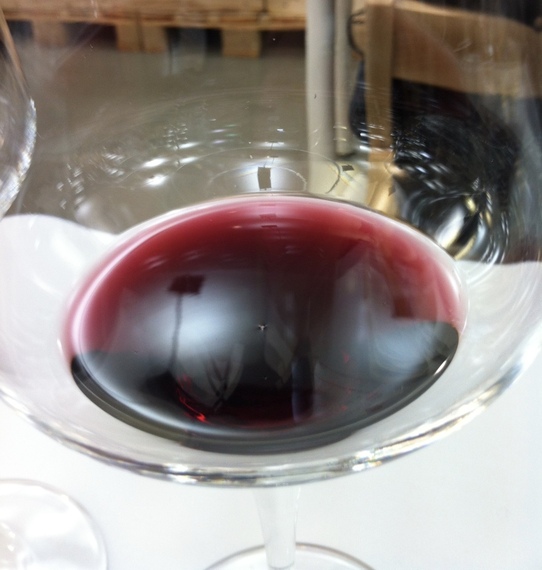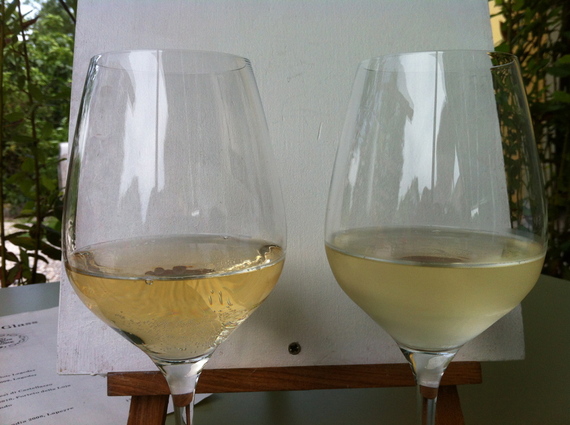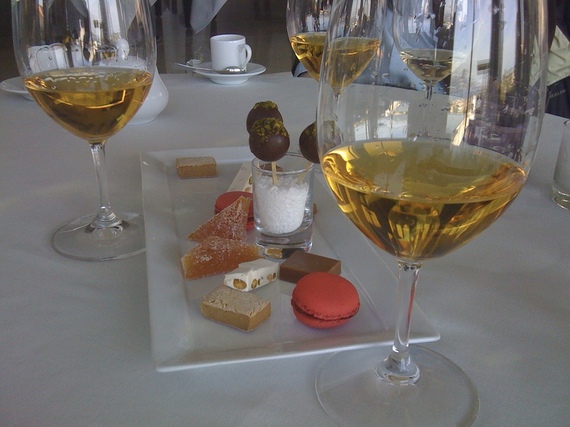Very possibly yes, but to understand, we have to ask more questions.
How does the body process the alcohol in wine?
In her book Natural Wine, Isabel Legeron explains that when alcohol arrives for processing in the liver, an enzyme transforms it into a more toxic substance that leads to headaches and nausea if released directly into the bloodstream. But luckily, a second enzyme transforms that ugly substance into something benign that your body excretes easily.
The problem is that drinking alcohol depletes the second enzyme. If your alcohol intake is fast enough, you use the second enzyme up, and toxins from the first transformation go right into your bloodstream.
Unfortunately, sulfites have a potent depleting effect on that second enzyme. So, drinking alcohol with sulfites means the toxic substances get into your bloodstream even faster than they otherwise would.*
Where do the sulfites in wine come from?
Tiny amounts of sulfites are naturally are present on grape skins along with indigenous yeasts. In natural winemaking, grapes that have been grown without industrial products (fertilizers, pesticides, herbicides, etc.) ferment with their own yeasts. Whatever sulfites there are, usually 5-15 mg/liter, remain in the wine.
Sometimes, a small amount of sulfites, 20-25 mg/liter, is added to the wine at the time of bottling to help preserve the wine. (Sulfites are also added to many food products to maintain freshness and appearance.)
In industrial winemaking, larger doses of sulfites are added to kill any bacteria on the grapes, including the native yeasts. The winemaker, then adds selected yeasts for faster, more controlled fermentation. Many other additives are permitted even in making organic wine in the EU: tannins, enzymes, sugar, fining agents like diatomaceous earth, etc. These additives cause hangover symptoms in some people.
How do I know if sulfites have been added?
This is tricky because if a bottle of wine has over 10 mg/liter of sulfites present, the label must say "Contains Sulfites." Natural wines with no added sulfites often are often labeled this way because of the presence of naturally-occurring sulfites.
No distinction is made between naturally occurring sulfites and added sulfites, which are byproducts of the petrochemical industry (sulfur dioxide, sodium sulfite, sodium and potassium metabisulfite, or potassium bisulfite). Unfortunately, labels don't indicate the amount of sulfites either. There is a big difference between 10 mg/liter and 200mg/liter. The limits are:
For the European Union by Type:
Red-150 mg/liter, White-200 mg/liter, Sweet-400 mg/liter
For the United States: 350 mg/liter
What's the conclusion?
In my experience, drinking wine made naturally with organic, biodynamic (or similar method) grapes leads to fewer headaches the next day. But your experience will ultimately depend not just on the the sulfites in the wine but on you:
- how much and how fast you drink
- the alcoholic content of the wine
- the type of wine*
- your weight, sex, mood, age, muscle mass etc.
- and the amount and type of food you consume.
*According to the BBC, "Fizzy alcohol will make you feel the effects of alcohol more quickly as the bubbles increase the pressure in your stomach, forcing alcohol into your bloodstream faster." ("The Science of Alcohol, How Booze Affects Your Body," 12/12/14)
My advice for the holidays is to drink wine made naturally with food in moderation. It takes a little extra effort to find out how the wine you're drinking has been made, but that could save you a lot of headaches.
*(Natural Wine, Isabel Legeron, Cico Books, London, 2014, p. 84.)


